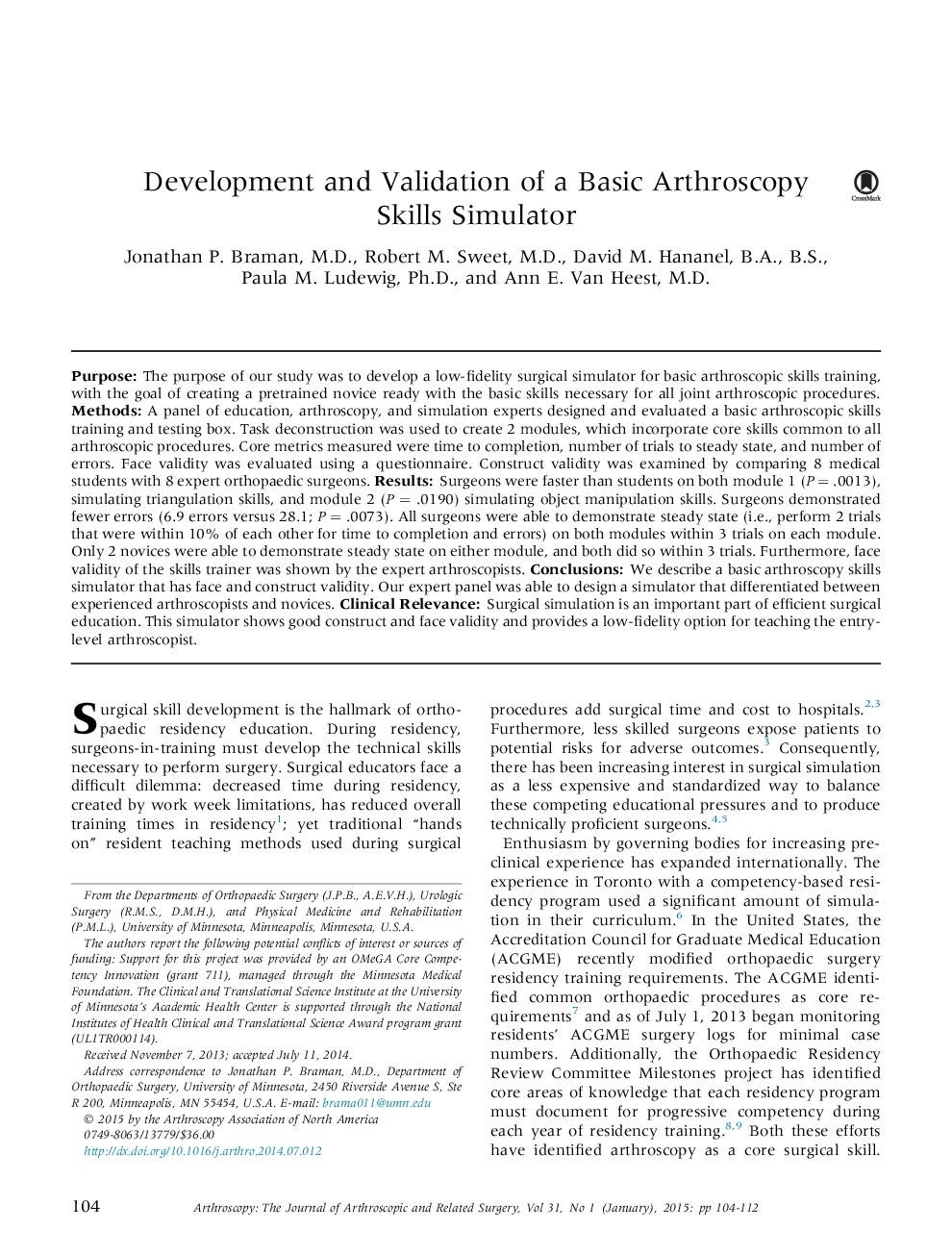| Article ID | Journal | Published Year | Pages | File Type |
|---|---|---|---|---|
| 4042732 | Arthroscopy: The Journal of Arthroscopic & Related Surgery | 2015 | 9 Pages |
PurposeThe purpose of our study was to develop a low-fidelity surgical simulator for basic arthroscopic skills training, with the goal of creating a pretrained novice ready with the basic skills necessary for all joint arthroscopic procedures.MethodsA panel of education, arthroscopy, and simulation experts designed and evaluated a basic arthroscopic skills training and testing box. Task deconstruction was used to create 2 modules, which incorporate core skills common to all arthroscopic procedures. Core metrics measured were time to completion, number of trials to steady state, and number of errors. Face validity was evaluated using a questionnaire. Construct validity was examined by comparing 8 medical students with 8 expert orthopaedic surgeons.ResultsSurgeons were faster than students on both module 1 (P = .0013), simulating triangulation skills, and module 2 (P = .0190) simulating object manipulation skills. Surgeons demonstrated fewer errors (6.9 errors versus 28.1; P = .0073). All surgeons were able to demonstrate steady state (i.e., perform 2 trials that were within 10% of each other for time to completion and errors) on both modules within 3 trials on each module. Only 2 novices were able to demonstrate steady state on either module, and both did so within 3 trials. Furthermore, face validity of the skills trainer was shown by the expert arthroscopists.ConclusionsWe describe a basic arthroscopy skills simulator that has face and construct validity. Our expert panel was able to design a simulator that differentiated between experienced arthroscopists and novices.Clinical RelevanceSurgical simulation is an important part of efficient surgical education. This simulator shows good construct and face validity and provides a low-fidelity option for teaching the entry-level arthroscopist.
